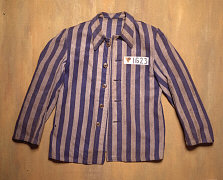Between 1933 and 1945, Nazi Germany established about 20,000 camps to imprison its many millions of victims. These camps were used for a range of purposes including forced-labor camps, transit camps which served as temporary way stations, and extermination camps built primarily or exclusively for mass murder. From its rise to power in 1933, the Nazi regime built a series of detention facilities to imprison and eliminate so-called "enemies of the state." Most prisoners in the early concentration camps were German Communists, Socialists, Social Democrats, Roma (Gypsies), Jehovah's Witnesses, homosexuals, and persons accused of "asocial" or socially deviant behavior. These facilities were called “concentration camps” because those imprisoned there were physically “concentrated” in one location.
After Germany's annexation of Austria in March 1938, the Nazis arrested German and Austrian Jews and imprisoned them in the Dachau, Buchenwald, and Sachsenhausen concentration camps, all located in Germany. After the violent Kristallnacht ("Night of Broken Glass") pogroms in November 1938, the Nazis conducted mass arrests of adult male Jews and incarcerated them in camps for brief periods.
Following the German invasion of Poland in September 1939, the Nazis opened forced-labor camps where thousands of prisoners died from exhaustion, starvation, and exposure. SS units guarded the camps. During World War II, the Nazi camp system expanded rapidly. In some camps, Nazi doctors performed medical experiments on prisoners
Major Nazi camps in Europe, January 1944.
|
Following the June 1941 German invasion of the Soviet Union, the Nazis increased the number of prisoner-of-war (POW) camps. Some new camps were built at existing concentration camp complexes (such as Auschwitz) in occupied Poland. The camp at Lublin, later known as Majdanek, was established in the autumn of 1941 as a POW camp and became a concentration camp in 1943. Thousands of Soviet POWs were shot or gassed there. |
 |